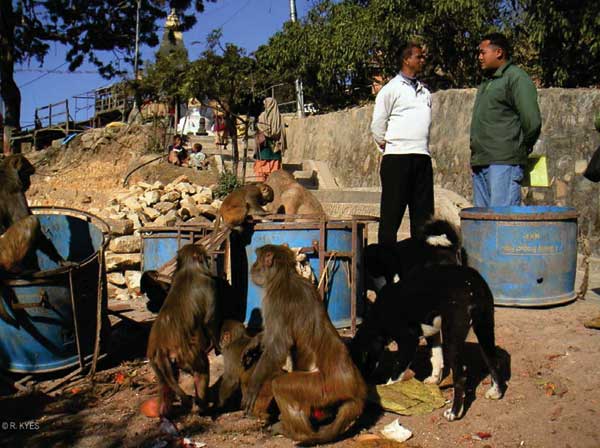Volume 12, Number 6—June 2006
Research
Temple Monkeys and Health Implications of Commensalism, Kathmandu, Nepal
Figure 3

Figure 3. Natural forage is extremely limited at Swoyambhu. Rhesus macaques routinely raid garbage bins and people's homes in search of food. (Photo by R. Kyes.)
Page created: January 04, 2012
Page updated: January 04, 2012
Page reviewed: January 04, 2012
The conclusions, findings, and opinions expressed by authors contributing to this journal do not necessarily reflect the official position of the U.S. Department of Health and Human Services, the Public Health Service, the Centers for Disease Control and Prevention, or the authors' affiliated institutions. Use of trade names is for identification only and does not imply endorsement by any of the groups named above.